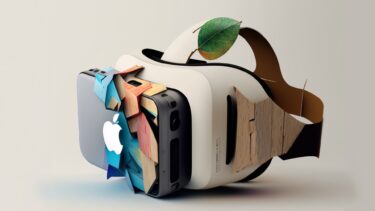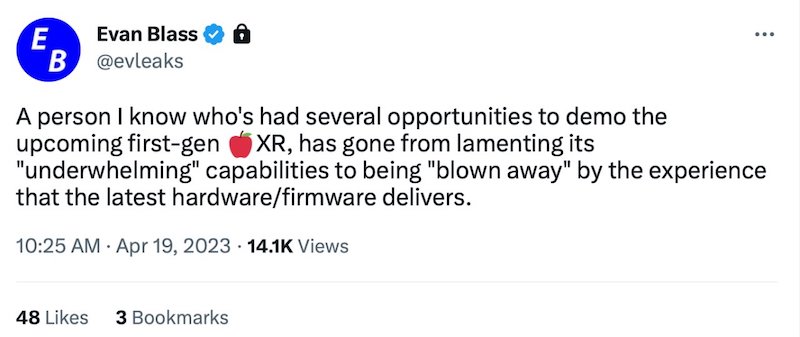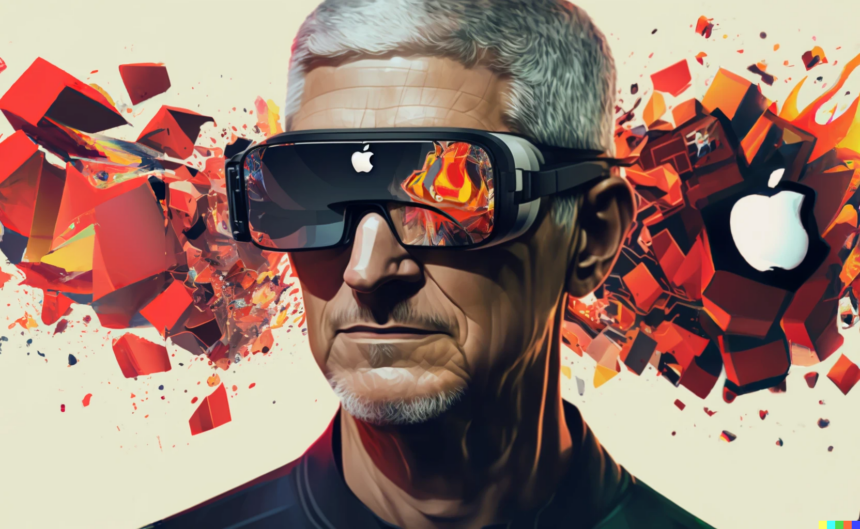How Apple’s VR headset could beat Meta at its own game

Apple's VR headset has the chance to create an iPhone moment. Above all, the user experience could become a big threat to the competition.
Why doesn't Meta do the same? That's the thought that's been running through my head over the past few days as I read recent reports about Apple's VR headset. It's set to be unveiled at the annual WWDC in June, according to Mark Gurman. After reading his Bloomberg report from April 18, everyday life with a device like this played out in my mind's eye.
If I open the browser in AR mode, briefly walk to the front door and return to the room, the app window stays where I left it. Sounds logical. If the cat or a visitor distracts me, I simply switch from Augmented to Virtual Reality with a twist of a knob and devote myself undisturbed to consumption or work.
Seamless switching with Apple's VR headset?
Each application could have its own place in the home. Or alternating between two places, like a desk and a standing desk for work, between which the operating system switches automatically.
Apple leaker Evan Blass also reported the new "experience" offered via a subscribers-only tweet, which really blew away an alleged tester. Quite in contrast to a predecessor model with "insufficient" capabilities.

Image: Evan Blass
Especially smooth multitasking when switching between VR and AR applications could make the difference between success and failure. My Amiga computer was able to switch between several applications on the fly in the early nineties, 30 years ago.
So why should a VR novice in 2023 have lower expectations if they want to integrate their high-end headset into everyday life in a meaningful way for work, organization, and entertainment? This is especially true with acquisition costs in Apple's price regions.
Rumor has it that the first "Reality Pro" headset will cost $3,000, followed by a less expensive second-generation device called the Apple Reality One.
Disruptive factors for virtual reality
Admittedly, Meta's Quest 2 and Quest Pro already offer some of these capabilities when switching between the dashboard, VR, and AR apps. After sitting down, I simply switch to the sofa play area. With a double tap, I launch the camera view into the outside world. Even local AR multiplayer games with computer graphics permanently anchored in the environment are possible.

Apple's possible XR headset is said to have a quick-switch girl for switching virtual and physical worlds, as well as many other features. | Image: Midjourney / DALL-E 2 prompted by MIXED
Further updates and the Quest 3, planned towards the end of the year, should bring even more advances. For now, though, the transition is often still too cumbersome, too slow, and too error-prone. How cool would it be to throw on Quest 2 and start training in Les Mills Bodycombat in seconds?
Instead, on frosty evenings I stood in front of the open balcony door shivering for minutes until I have the playing field marked for the umpteenth time after a crash, everything is loaded, and the virtual trainer is finally standing in front of me.
In my ideal scenario, it's enough to roll out a small, circular VR carpet on the floor, and the VR headset automatically starts the fitness training.
An iPhone moment for VR?
Even searching the store or simply consuming a VR movie is sometimes surprisingly cumbersome with the Quest 2. Former Meta consultant John Carmack also criticized sticking points in the user interface several times. A faster entry into VR, for example, could contribute to more regular use.
Market leader Meta leaves too much room here for the competition to attack. That provides Apple with a chance to make a big difference in the user experience, creating an iPhone moment, or perhaps a Macintosh moment. Of course, this will only be true if the new operating system "xrOS" ideally implements hand tracking operation. Apple will also need enough VR and AR applications with hand tracking to justify the expense.
The deep integration with Apple's ecosystem could really pay off. According to Gurman's report, the XR headset should be able to run existing iPad apps. Accordingly, all important apps would receive adaptations for the new operating system, from the browser to maps and media to (presumably spatial) Facetime calls.
A spatial adaptation of the collaboration app Freeform, which allows several users to work together on whiteboards in VR, would have particularly great potential. There are also already some concepts in the field of VR productive apps, such as Horizon Workrooms or Vive Sync. However, Apple could score with a more elegant integration.
All in all, the current situation brings back memories of the time before the iPhone. Back then, hardly anyone knew exactly how the mobile Internet would find its way into everyday life on a broad front, yet it is now indispensable.
Gimmick or computing platform?
There were already plenty of Internet-capable cell phones. But Apple and Android were the first to say goodbye to cumbersome menus on a grand scale and rely entirely on the nascent touchscreen operation. Such a paradigm shift should not be underestimated, even with the possibility of a complete switch from VR controllers to hand tracking.
Personally, I still don't count myself among Apple's target audience. The expensive first "Reality Pro" model is aimed at developers and early adopters that have a sizable budget to explore new technology.
But if the concept works out, broader target groups could become curious about VR starting with the "Reality One," a rumored cheaper Apple headset model. Especially if they used to consider virtual reality as a gimmick and see a new status symbol in a slimmer form factor.
All other rumors about the device can be found in our article about Apple's Mixed Reality headset.
Note: Links to online stores in articles can be so-called affiliate links. If you buy through this link, MIXED receives a commission from the provider. For you the price does not change.